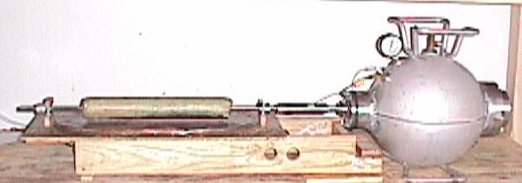
Plasma Fusion Motor/Generator By Christopher Arnold


How it works
With each Plasma Pulse, this device triggers a Dense Plasma Focus, unhindered by past problems of electrode erosion. Vast amounts of energy are released and shockwaves (Scalar ?) radiate from the collapsing plasma. Another area of research is in Low Energy Mather-Type Plasma Focus. No electric motor on the planet can operate under such stress - However this is not just a motor. Although the input voltage is only 350VDC - the video evidence would suggest magnitudes in voltage rise as the contacts instantaneously separate. The electrode separation speed of the Omega I is four times faster than previous prototypes - and plasma voltages would rise theoretically to potentials higher than those required for fusion. Each contact separation is roughly calculated to break the current in .0000001 second or less, the "inductive kickback" will cause the voltage potentials to soar for a nanosecond. That's all the time it takes to effect fusion. Animation above: The central glow represents the forming plasma and the small white dots would be deuterons. The plasma swells, trapping the deuterons within the core - the electron generated magnetic field collapses the plasma and the "internal" temperature soars to fusion level, fulfilling both requirements of voltage and temperature for hot fusion. Neutrons and other energies escape upon ignition. The differences are, this is a Micro plasma that requires Zero external magnetic confinement means. Aneutronic fusion of Proton/Boron11 (P/B11), or a Boron Hydride may be possible as well.